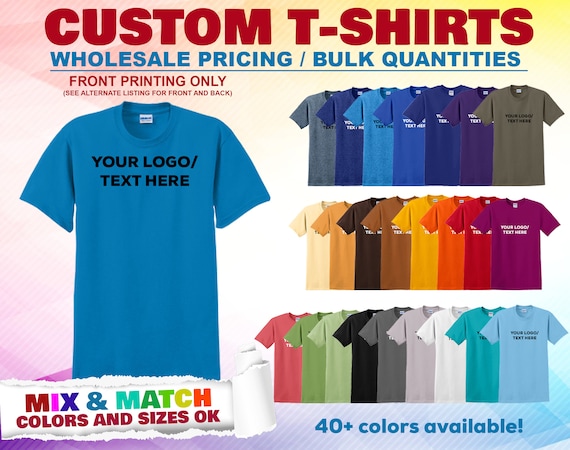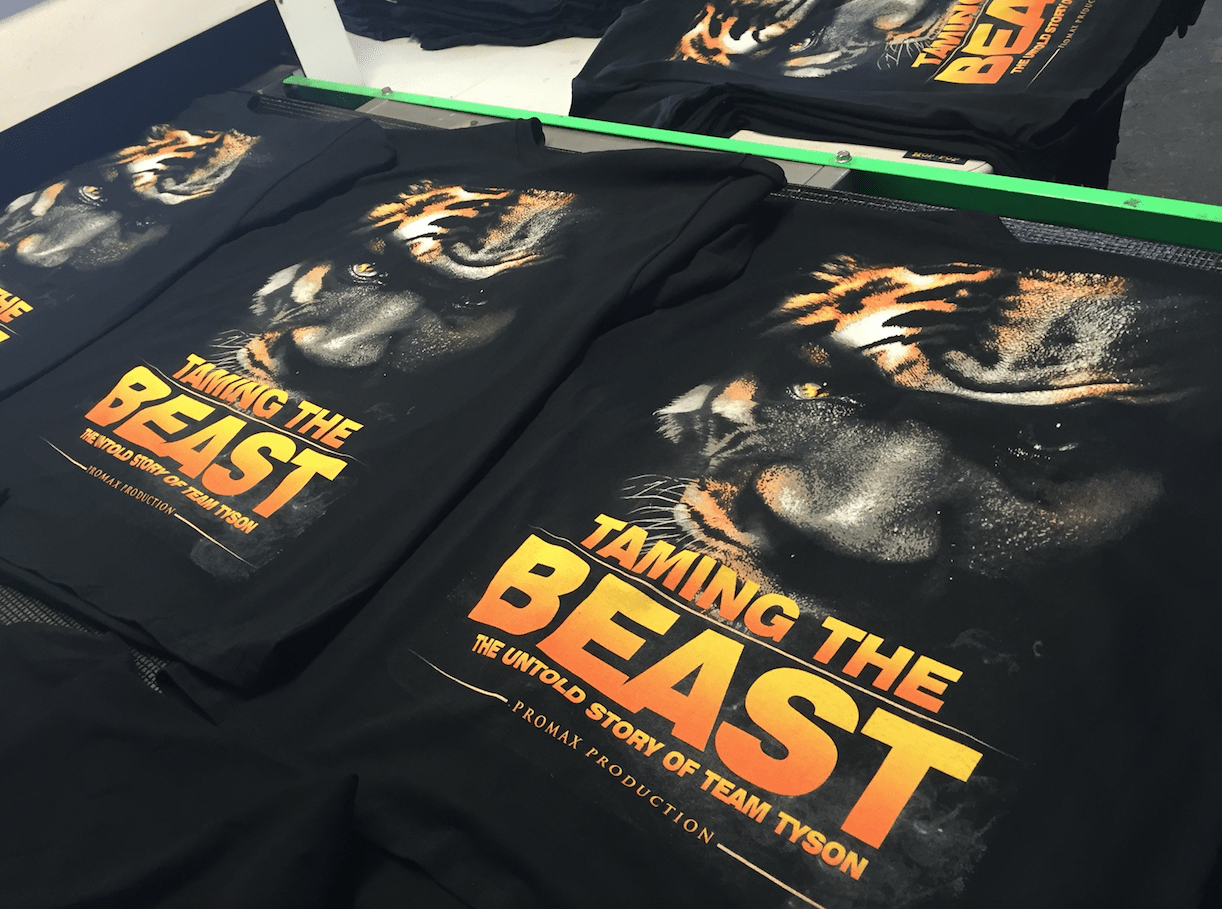Professional Screen Printing Kit for Custom Apparel
Professional Screen Printing Kit for Custom Apparel
Blog Article
Display Printing Uncovered: Every Little Thing You Need to Find Out About T-Shirt and Garment Printing Methods
Screen printing is a fascinating method that combines art with method, offering unlimited opportunities for creative thinking. Ready to discover the important elements that make display publishing an art kind?
The Fundamentals of Display Printing: How It Functions
When you dive right into display printing, you'll find it's both an art and a science. At its core, display printing includes producing a stencil, or display, that permits ink to pass via just in specific areas.
Next, you'll blend your inks and prepare your printing surface area. Position the display over the textile, then make use of a squeegee to push ink through the display onto the garment. This process calls for accuracy, as you desire clear, dynamic prints. After printing, you'll cure the ink with heat, ensuring it follows the material and lasts via laundries. Each step is important, and mastering them will certainly boost your display printing skills, transforming simple garments into unique, expressive pieces.
Kinds Of Display Printing Methods
Once you grasp the basics of screen printing, it's time to check out the various techniques that can elevate your styles. One prominent method is traditional screen printing, where ink is pushed via a stenciled display.
If you're intending for great details, think about discharge printing. This method eliminates color from the material, leaving a soft, classic look. One more alternative is plastisol printing, known for its durability and vibrant colors, making it a preferred for lots of brands. Experiment with halftone printing to develop slope effects and detailed styles. Each method has its unique beauty, so don't be reluctant to attempt them out to locate what matches your design best!
Vital Devices for Display Printing
To achieve magnificent cause display printing, having the right equipment is basic. You'll require a strong display printing frame, which holds the mesh that moves your design onto the garment. Next off, purchase high-quality squeegees; these are vital for using ink evenly throughout the display. You'll likewise need an excellent exposure device to produce your screens, along with a washout cubicle for cleansing them after use. A trusted heat source, like a conveyor clothes dryer or warmth press, is essential for treating your prints to assure durability. Don't fail to remember a correct work area, furnished with tables and storage for your products. Lastly, protective equipment, such as gloves and masks, will keep you risk-free from chemicals and inks. With the right devices, you'll be well on your means to producing professional-quality prints.
Selecting the Right Inks and Materials
When choosing inks and materials for screen printing, you require to think about the kind of ink that works ideal for your job. Think of fabric compatibility to assure your designs look last and fantastic long. Also, check out eco-friendly ink alternatives to make your printing process more lasting.
Types of Display Inks
Selecting the best display ink is important for achieving vivid, durable prints that meet your task's requirements. There are a number of kinds of display inks to analyze. Specialty inks, such as glow-in-the-dark or metal, can add unique effects to your layouts.

Fabric Compatibility Considerations
Comprehending material compatibility is essential for attaining high-quality display prints, especially considering that various products react distinctly to different inks. Constantly test your inks on sample material to guarantee they stick properly and maintain shade honesty. Additionally, keep in mind that fabric weight and appearance can influence the final outcome, so selecting the appropriate ink and material combo is crucial for your task's success.
Eco-Friendly Ink Options
Eco-friendly inks are coming to be a prominent choice for screen printers that want to minimize their environmental influence while maintaining quality. When choosing inks, consider water-based inks, which are less harmful and much easier to clean up compared to standard solvents.
In addition, seek inks made from renewable energies, such as soy or vegetable-based options. By picking the best inks and products, you'll not only produce magnificent styles yet additionally contribute to a much more sustainable printing procedure. Make the button, and your prints will certainly mirror your dedication to the setting!
Preparing Your Layout for Screen Printing

File Style Demands
To assure your layout looks vivid and sharp on material, you'll need to pay attention to file format needs for display printing. Begin with vector data like AI or EPS, as they can be scaled without shedding high quality. If you use raster photos, choose high-resolution files, such as TIFF or PNG, ideally at 300 DPI. Prevent utilizing JPEGs, as they can shed quality when resized. Make sure your layout has a clear history to prevent unwanted white sides on your prints. Maintain color modes in mind; CMYK is conventional for screen printing, so transform your RGB designs appropriately - screen printing kit. By complying with these guidelines, you'll establish your artwork up look at this web-site for a successful print.
Shade Separation Methods
Shade separation is a necessary action in preparing your style for screen printing, and grasping it can significantly improve your print high quality. You'll need to break your style into private shades, as each shade calls for a separate screen during printing. This accuracy not only ensures exact shade representation but additionally improves the printing procedure.
Resolution and Dimension
Accomplishing the most effective lead to display printing begins with guaranteeing your design has the right resolution and dimension. Ideally, your artwork ought to be at the very least 300 DPI (dots per inch) for sharp, clear prints. If you make use of lower resolution, your end product could look amateur and pixelated.
When it concerns dimension, consider the measurements of your print location. Style your artwork to match the final print size, preferably developing it in the real dimensions you'll be publishing. This means, you'll avoid any kind of unanticipated scaling issues.
Always examine your layout in both vector and raster formats. Vector graphics can be scaled without losing high quality, making them optimal for display printing. Preparing correctly will ensure your layout looks amazing on every garment!
Step-by-Step Display Printing Process
Display printing is a dynamic process that permits you to produce lively layouts on numerous surfaces. To obtain started, you'll require a screen, solution, and your selected ink.
After washing out the unexposed emulsion, your screen is ready. Set it up on your printing surface area and align your garment below it. Pour ink onto the screen and utilize a squeegee you could try here to push the ink through the stencil onto the fabric. Raise the screen meticulously and allow the print completely dry. Heal the ink utilizing heat to assure toughness. That's it! You have actually efficiently screen printed your design.
Tips for Effective Display Printing Projects
While you're diving right into your display printing projects, bear in mind that preparation is crucial to success. Start by gathering all your materials-- inks, screens, mops, and garments. A clean work area helps protect against undesirable mistakes, so clean up before you start.
Next, validate your artwork is high-resolution and properly sized for your garment. Test your screen for appropriate direct exposure and tidy it completely to stay clear of smudges. When blending your inks, comply with the producer's guidelines to accomplish the ideal uniformity.
Throughout printing, use even stress with your squeegee for regular results. Do not rush; take your time to validate each print satisfies your standards. After printing, allow your garments dry totally before handling or packaging them.
Lastly, constantly keep a sample of your benefit future recommendation. In this manner, you can analyze your progress and enhance your strategies over time. Delighted printing!

Frequently Asked Questions
For how long Does It Require To Set up a Display Printing Job?
Establishing up a display printing task usually takes about thirty minutes to an hour. You'll prepare the screens, mix inks, and adjust journalism. The moment differs based on complexity and experience, so stay organized!
Can I Print on Different Fabric Keys In Making Use Of the Very Same Strategy?
Yes, you can publish on different textile kinds making use of the very same method, but you'll require to readjust your inks and setups. Some textiles absorb ink in different ways, so exploring guarantees the very best results for each and every product.
What Prevail Blunders to Stay Clear Of in Screen Printing?
When display printing, prevent typical errors like utilizing the incorrect ink, neglecting correct direct exposure times, or skipping pre-press checks. Constantly test your setup and keep clean screens to guarantee quality results each time.
Exactly How Can I Properly Tidy and Maintain My Screen Printing Devices?
To effectively clean and keep your display printing equipment, you must regularly clean screens with ideal solvents, check squeegees for wear, and guarantee try this website all devices are saved dry and dust-free. Uniformity avoids expensive repair work and boosts efficiency.
Is Screen Printing Eco-friendly Contrasted to Various Other Approaches?
Display printing can be a lot more ecologically friendly than various other techniques, especially if you make use of water-based inks and eco-conscious products. By selecting sustainable materials and practices, you decrease waste and minimize your influence on the planet.
Display Printing Uncovered: Whatever You Required to Know Regarding T-Shirt and Garment Printing Methods
At its core, display printing entails developing a pattern, or display, that allows ink to pass through only in particular locations. Position the screen over the fabric, then use a squeegee to press ink via the screen onto the garment. One prominent approach is conventional screen printing, where ink is pushed through a stenciled display.When selecting inks and materials for display printing, you need to take right into account the type of ink that works ideal for your task.
Report this page